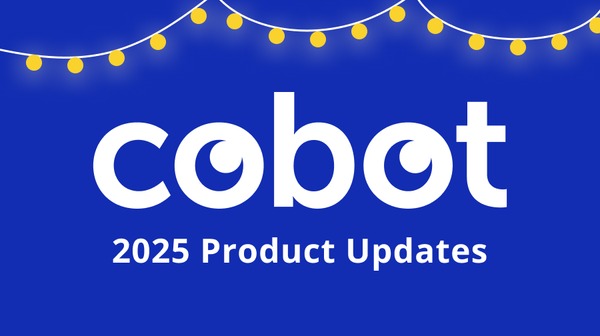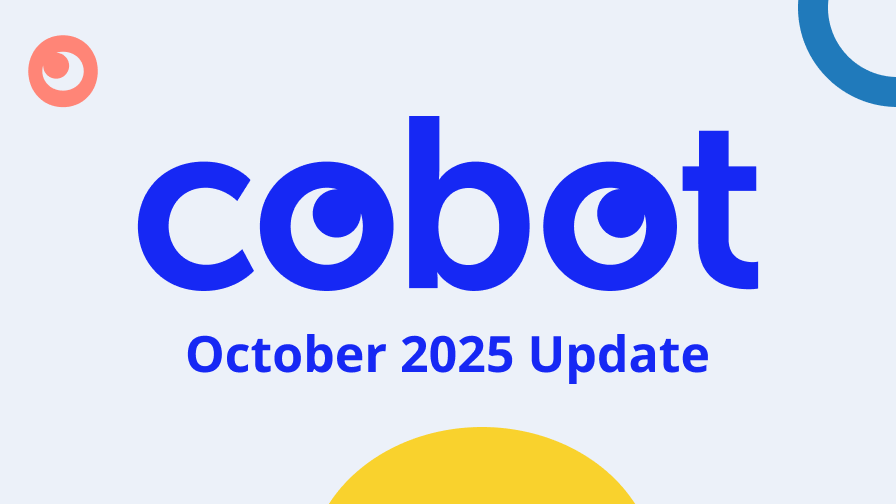When I started cobot in December last year (very spontaneously after a local coworking meetup) I didn’t consider it much more than a side project. Hence I didn’t spend too much time on business considerations but started working on the product pretty much immediately. Only some time later it turned out that we would be offering cobot to others as well, and that we would make money from it.
A few months passed and it wasn’t until I attended Schnitzelconf in September that I realized I should start thinking about the business side of cobot.
By the time I had become aware of the Lean Startup movement. The ideas it presents sound very solid. A blog post called “Lean startup is a rigorous process” gave me the final nudge I needed to write something down on paper (well, not on paper, but anyway). It proposes a template for a one page business model called the Lean Canvas. This canvas is a summary of the most important areas of your business, which you can then use to drive your actions (which will be the topic of a future post).
I am aware that other companies might consider their business plan a trade secret or something. Here’s my take on it: the ideas in this business plan are not very new. Anyone in the coworking area can come up with them. What counts is the execution, which in this case I think is particularly hard and not too easy to copy. On the other hand, publishing our plans and ideals can give our customers a certain level of trust. They know what we’re up to, that we’re not going to sell it in a few months’ time etc. Building trust is really important, especially with a small company like ours, and this is our offering to (start to) win that trust.
So, without further ado, the cobot business model:
Problem
What’s the problem we think we have identified?
Running a coworking space involves too much repetitive work (which costs too much money to do by hand):
- managing members (sign up, sign contract, change plan or other details from time to time)
- collecting payments, invoicing
In order to be profitable coworking spaces need to make more money by providing extra services/access to resources.
- The management/accounting part is hard, so it keeps spaces from doing it.
Coworking spaces don’t know how much money they could actually make because of missing metrics.
Solution
What’s our proposed solution?
Users can sign up and manage their memberships themselves using cobot, taking a lot of work from the space managers.
Spaces can automate collecting payments for rent and extra services, which again reduces their work load and makes offering some services feasible in the first place.
Our analytics section provides spaces with the numbers they need to optimize their business and make more/enough money.
Unique Value Proposition
What value do we provide that no-one else does?
By combining features from different areas like accounting, payments and member management into a single tool and tailoring them to coworking we can help a coworking space much better than other, more generic and not so well integrated tools can.
Unfair Advantage
What makes cobot stand out against the competition, why can’t it be copied easily?
It’s pretty complicated to build a system that fits all the different requirements the coworking spaces have. As a software company that also runs a coworking space we have a lot of knowledge about both — coworking and creating software.
Customer Segments
Coworking spaces around the world (at the time ~600 spaces worldwide)
Spaces can be segmented by size and location
Location:
- U.S. where coworking is already very popular and there are hundreds of spaces, language is English
- Europe: ~ 200 spaces (Oct 2010), many speak English, but also requirements for localization
- Rest of the world — probably a large market but many different languages, we don’t know anyone there yet
Size:
- Small spaces that just started, < 20 members — don’t really need cobot that much, but it’s easier to use it from the start than to transition later
- Medium spaces, 20 to 60 members, this is our main target group
- Large, > 60 members, might still use cobot, but maybe some of those need their own, more specific/customized tools
Channels
How can we reach new customers?
The global coworking mailing list allows us to see when and where new spaces open and we can get in contact with existing spaces as well.
Word of mouth: new spaces ask the established ones for advice, they will recommend us if we can build a great product.
Coworking conferences and other events, where we can give talks and demo cobot.
Key Activity
What will our users do on cobot?
Coworking managers will manage their members, charge people for services, collect payments.
Coworkers will use the site to book additional services, change their information/plan etc.
Revenue Streams
Where does the money come from?
We charge the coworking spaces money for using cobot, depending on their size (more coworkers = more income = higher fee)
We expect a coworking space who uses cobot as its business backend to keep using it pretty much for the lifetime of the space (> 5 years). An average space with ~30 coworkers would pay us 3600 EUR in 5 years (2 EUR * 30 coworkers * 12 months * 5 years)
If we can sign up 66 spaces within 1 year our monthly revenue would be 4000 EUR
If we can sign up 200 spaces in 2 years our monthly revenue would be 12000 EUR
Cost Structure
After 1 year
People:
- Alex: 3500 EUR/month
- contractors for sales: ?
Servers: ~200 EUR
After 2 years
People:
- Thilo, Alex: 8000 EUR/month
- 1 support/PR/sales: 3000 EUR/month
- = 11k EUR
cobot is not inherently viral so we need to do sales to get new customers (esp. in the beginning, until word of mouth generates enough customers)
- New customers are acquired by email/phone, demoing/explaining the product, giving support. If we convert 5.5 spaces per month and a sales person costs us 1.5k/month our acquisition cost would be 300 EUR
Hosting: the more spaces we add the more servers we have to add
- Right now we are running 170 coworkers on a small EC2 instance for ~60 EUR/month with some space to spare
- 200 spaces with 30 coworkers would be 6000 coworkers = 20 instances; I think we could do with 15 instances = 900 EUR/month; with larger, more cost effective instances we can bring this down to 500 EUR/month
Overall cost = 11.5k EUR/month
Competition
Nadine and other open source projects:
- advantages: people can extend it the way they want, don’t have to pay for it (at least no service fee, they have to pay for setup, maintenance, development though)
- disadvantages: no commercial support (for now), spaces have to set up hosting themselves, no clear product vision or product owner
Existing (membership) management apps:
- advantages: they may be better than cobot at specific tasks
- disadvantages: not an integrated solution specifically for coworking, so will never be an ideal solution
This whole model is of course based on a lot of assumption, which I’m in the process of validating (or proving wrong) right now.
As mentioned at the beginning this canvas is only the beginning. We have since started measuring and dashboarding certain metrics, which we use to drive our decisions, but more on that next time.


